The sick phenomenon of school shooting contagion
Mass shootings can spread like a disease, with each massacre inspiring new rampages. Can the cycle of violence be stopped?
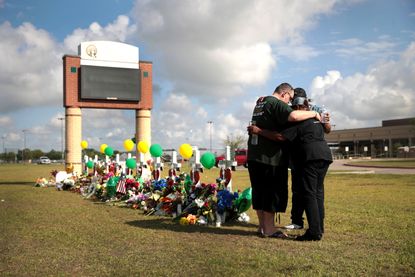
Mass shootings can spread like a disease, with each massacre inspiring new rampages. Can the cycle of violence be stopped? Here's everything you need to know:
How do shootings catch on?
Researchers are finding ever more evidence that school shootings are often not isolated, random outbursts of violence but instead spread "contagiously," with every attack "infecting" and inspiring more potential killers. Most mass shooters are young males who share the same ideology — one that glorifies violent revenge against the society that they feel has unfairly rejected or abused them — and they often express admiration for how their murderous predecessors achieved notoriety. Before killing nine people at an Oregon community college in 2015, the gunman posted a video online about the 2012 massacre at Sandy Hook Elementary School in Newtown, Connecticut. The Sandy Hook shooter himself praised other mass shooters, including Anders Breivik, who killed 77 people — mostly teenagers — in Norway in 2011. Each massacre may give "people who are vulnerable or thinking along these lines ideas about what to do and how to do it," says Columbia University epidemiologist Madelyn Gould. New killer "infections" can spring up quickly, especially in a country where guns are so plentiful and easily obtained. "Flu is a risk factor for more flu," says University of Illinois epidemiologist Gary Slutkin. "Mass shootings are a risk factor for mass shootings."
Subscribe to The Week
Escape your echo chamber. Get the facts behind the news, plus analysis from multiple perspectives.

Sign up for The Week's Free Newsletters
From our morning news briefing to a weekly Good News Newsletter, get the best of The Week delivered directly to your inbox.
From our morning news briefing to a weekly Good News Newsletter, get the best of The Week delivered directly to your inbox.
When did this phenomenon start?
The Columbine High School massacre in 1999 is considered the spark that ignited the epidemic. A 2015 Mother Jones investigation found the suspects in 74 school shooting plots or attacks were inspired by the Colorado killings — with 14 of the plots scheduled to take place on the shooting's anniversary. In at least 10 cases, the suspects and attackers referred to Columbine killers Eric Harris and Dylan Klebold as "heroes, idols, martyrs, or God." At least three plotters actually visited Columbine High, including a 16-year-old who posed as a student journalist to gather information about the trauma caused by the killing spree. "All he wanted to know about was what the students and staff felt like," a law enforcement official said. The teenager was later arrested for planning a massacre at his own school.
Does mental health play a role?
It's not clear. Michael Stone, a psychiatrist at Columbia University who maintains a database of mass shooters, said in 2015 that only 22 percent of such killers had a severe mental illness. Still, it's hard to say whether mental illness causes or contributes to any individual act of violence. But some researchers note that suicide has also been found to be viral — after Marilyn Monroe's fatal drug overdose, suicides increased 12 percent nationally — and wonder whether mass shootings might be a similar form of contagion, because the attackers are often killed by police. "Suicides will trigger others," says University of Pennsylvania psychologist Dan Romer, "so it makes sense that people who want to commit suicide while killing others could be influenced in the same way."
Are males more susceptible?
Since Columbine, 95 percent of school shooting plotters have been men or teenage boys. (Not incidentally, the same percentages hold for lone-wolf terrorists, who also show signs of copycat behavior.) Sociologist Tristan Bridges argues that while these plotters are often portrayed as "outliers or oddballs," most are "conformists" to a distorted image of masculinity. Many feel emasculated because they believe they have failed to achieve success with girls and have little status among their peers. The 2015 Oregon gunman, for example, was active in an online group called the "beta boys," who glorified mass shootings and bemoaned their lack of meaningful relationships.
Does the media bear any responsibility?
Many experts believe that the saturation coverage that follows school shootings can act as a spur to other would-be killers. "If you blast the names and faces of shooters on news stations and constantly repeat their names, there may be an inadvertent process of creating a blueprint," explains Deborah Weisbrot, a psychiatrist who has interviewed hundreds of males who have made threats. For angry, lonely young men, infamy can seem exciting and desirable. As the 19-year-old Parkland, Florida, high school shooter said in a videotaped manifesto before shooting dead 17 people, "When you see me on the news, you'll all know who I am."
What can be done to stop copycats?
Some commentators have argued that the media should refuse to name mass shooters, to deny them the attention they desire and help contain the contagion. But given the ubiquity of social media and the competitive nature of the mainstream media, that seems unlikely to happen. Other experts suggest that more funding be pumped into threat assessment efforts, which bring together law enforcement officers and psychologists to stop mass shooters before they strike. If a teacher is troubled by a student's dark comment, a threat assessment team can look at his intentions, ability to handle stress, and access to weapons. The team might work to provide the student with counseling, or if violence seems imminent, have him arrested or hospitalized. Forensic psychologist J. Reid Meloy compares the challenge of detecting possible mass shooters to fighting cardiovascular disease. Doctors can't predict heart attacks, he says, but they can "try to lower the probability."
The death toll competition
Many would-be school shooters aren't simply inspired by past mass murderers; they're also driven by a desire to top those killers' death tolls — as if they were playing a video game. A Utah teenager who plotted an attack on his high school told police that he hated being compared to the Columbine attackers, because they "only completed 1 percent of their plan." A Florida 17-year-old who planned to bomb and shoot up his school said he wanted to "break the record" of the Columbine and Virginia Tech rampages. This one-upmanship goes back to the early days of TV news. In 1966, Robert Smith walked into an Arizona beauty school and shot five people dead. Later, he mentioned how he'd been impressed by the coverage of a sniper who three months earlier had climbed a clock tower in Austin and fatally shot 14 people. "I wanted to kill about 40 people," said Smith, "so I could make a name for myself."
Create an account with the same email registered to your subscription to unlock access.
Sign up for Today's Best Articles in your inbox
A free daily email with the biggest news stories of the day – and the best features from TheWeek.com
-
 5 sleeper hit cartoons about Trump's struggles to stay awake in court
5 sleeper hit cartoons about Trump's struggles to stay awake in courtCartoons Artists take on courtroom tranquility, war on wokeness, and more
By The Week US Published
-
 The true story of Feud: Capote vs. The Swans
The true story of Feud: Capote vs. The SwansIn depth The writer's fall from grace with his high-flying socialite friends in 1960s Manhattan is captured in a new Disney+ series
By Adrienne Wyper, The Week UK Published
-
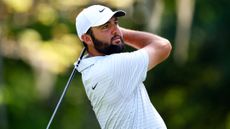 Scottie Scheffler: victory for the 'pre-eminent golfer of this era'
Scottie Scheffler: victory for the 'pre-eminent golfer of this era'Why Everyone's Talking About Masters victory is Scheffler's second in three years
By The Week Staff Published
-
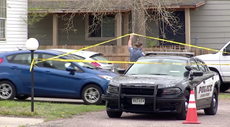 Gunman kills 6, himself at Colorado Springs birthday party
Gunman kills 6, himself at Colorado Springs birthday partySpeed Read
By Peter Weber Published
-
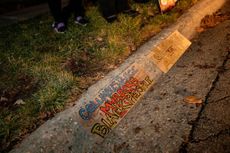 Columbus police fatally shoots Ma'Khia Bryant, 16, quickly releases body-cam footage
Columbus police fatally shoots Ma'Khia Bryant, 16, quickly releases body-cam footageSpeed Read
By Peter Weber Last updated
-
 Austin police, feds searching for ex-sheriff's deputy accused of killing 3, in Sunday's 2nd mass shooting
Austin police, feds searching for ex-sheriff's deputy accused of killing 3, in Sunday's 2nd mass shootingSpeed Read
By Peter Weber Last updated
-
 At least 8 dead in Indianapolis FedEx shooting
At least 8 dead in Indianapolis FedEx shootingSpeed Read
By Peter Weber Last updated
-
 Scalise says GOP will 'take action' on Gaetz if DOJ moves ahead with 'formal' case
Scalise says GOP will 'take action' on Gaetz if DOJ moves ahead with 'formal' caseSpeed Read
By Catherine Garcia Last updated
-
 Watchdog report: Capitol Police knew about potential for violence on Jan. 6, but held back
Watchdog report: Capitol Police knew about potential for violence on Jan. 6, but held backSpeed Read
By Catherine Garcia Published
-
 Former classmate arrested in 1996 disappearance of college student Kristin Smart
Former classmate arrested in 1996 disappearance of college student Kristin SmartSpeed Read
By Catherine Garcia Published
-
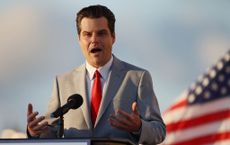 Report: Gaetz associate has been cooperating with federal investigators since last year
Report: Gaetz associate has been cooperating with federal investigators since last yearSpeed Read
By Catherine Garcia Last updated